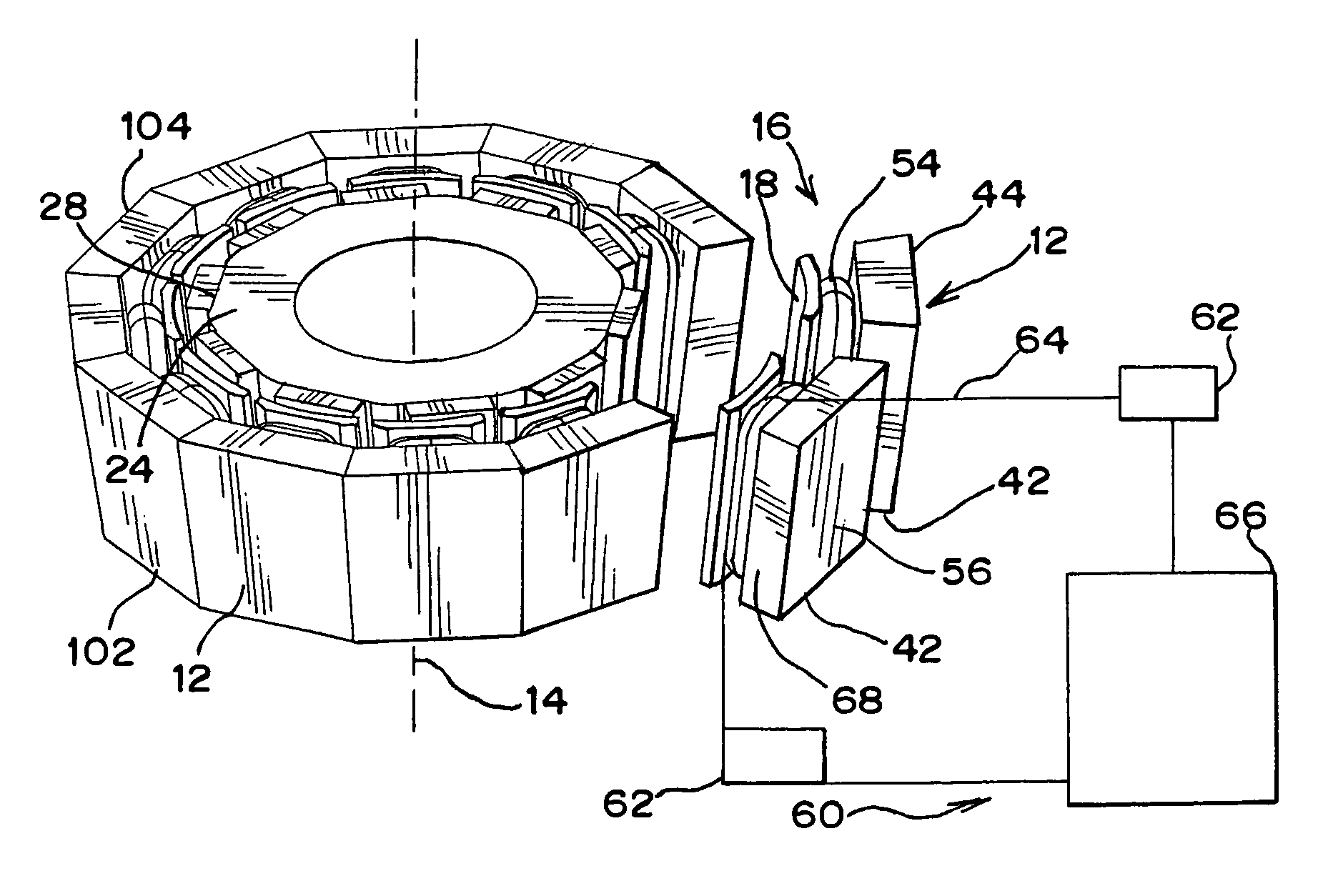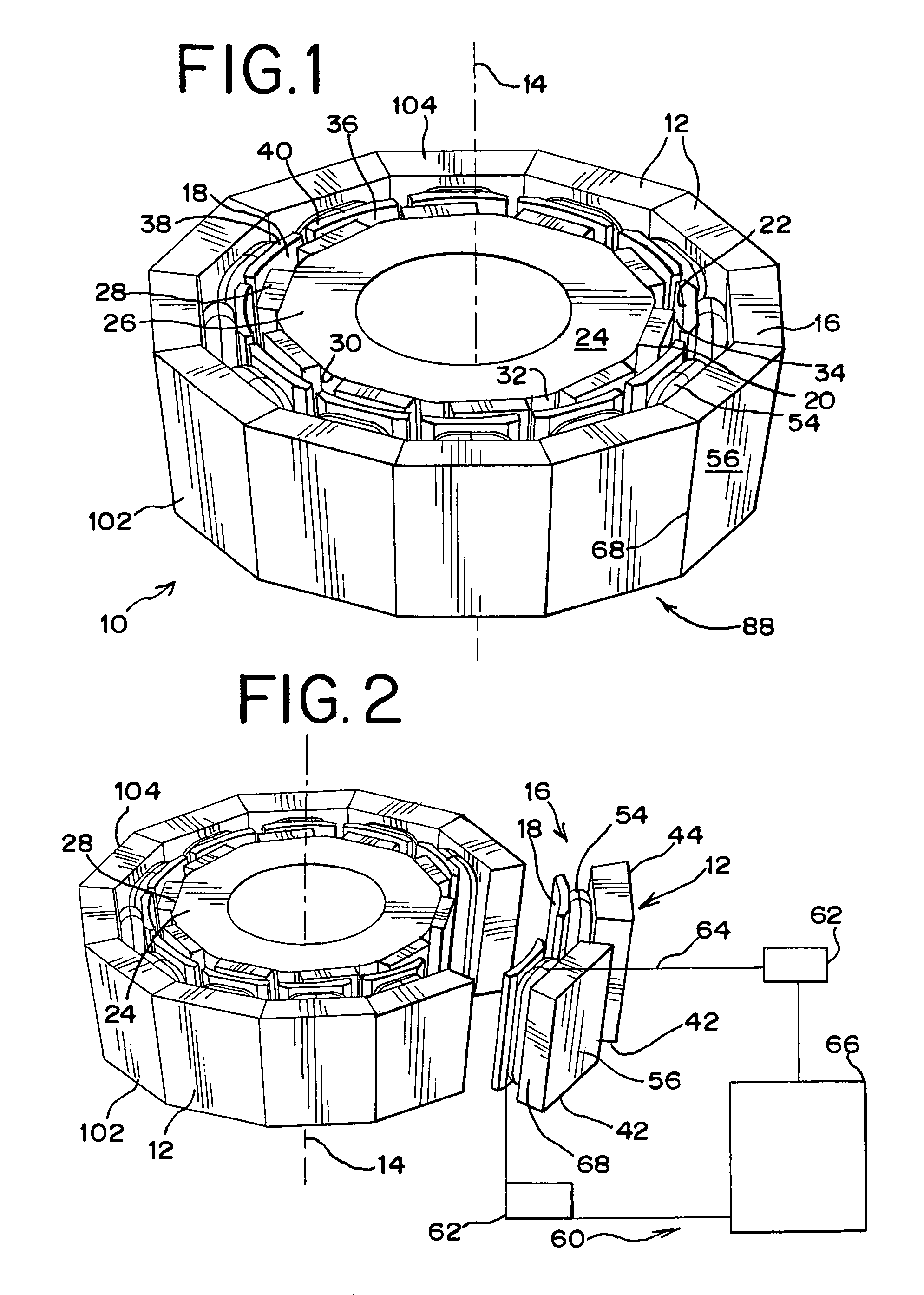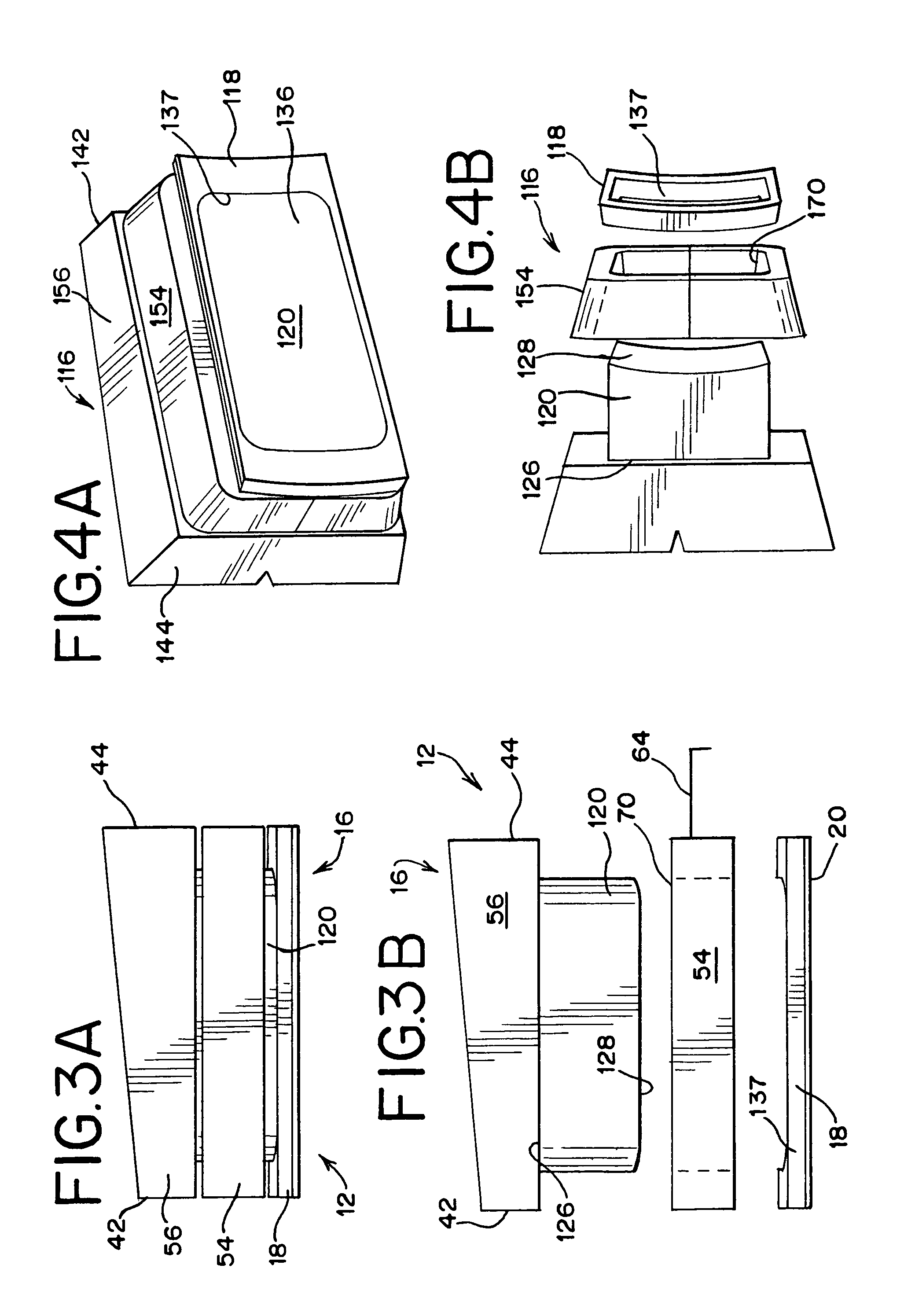Manufacture of electric motor component
a technology of electric motors and components, applied in the field of electric machines, can solve the problems of high cost of shipping assembled electric motors, prior art motors require special handling, and significant amount of air space, and achieve the effects of optimizing the power density of motors, maximizing available torque, and increasing the active length of stators
- Summary
- Abstract
- Description
- Claims
- Application Information
AI Technical Summary
Benefits of technology
Problems solved by technology
Method used
Image
Examples
Embodiment Construction
[0024]Referring to FIG. 1, the conical shaped stator 10 comprises a plurality of stator poles 12 assembled circumferentially about a stator axis 14. Each pole 12 comprises a modular molded tooth 16. The tooth 16 comprises a stator face 18 and a tooth body 120 (FIG. 3b). The stator face 18 has a generally rectangular shape tilted at an axial angle to define the conical shaped interior surface 20 defining a rotor space 22. A rotor 24 is rotatably mounted in the rotor space. The rotor 24 is axially aligned along the axis 14 of the stator and held in place by bearings or the like (not shown) to rotate in the rotor space. The rotor comprises a core 26 having a plurality of magnets 28 disposed along the outer perimeter 30. The magnets 28 are isolated from each other by dividers 32. Each magnet 28 defines a pole on the rotor 24. the outer perimeter 30 is precisely machined to maintain a predetermined air gap 34 between the rotor 24 and the stator 10.
[0025]The stator 10 surrounds the rotor ...
PUM
| Property | Measurement | Unit |
|---|---|---|
| soft magnetic | aaaaa | aaaaa |
| concave shape | aaaaa | aaaaa |
| magnetic field | aaaaa | aaaaa |
Abstract
Description
Claims
Application Information
 Login to View More
Login to View More - R&D
- Intellectual Property
- Life Sciences
- Materials
- Tech Scout
- Unparalleled Data Quality
- Higher Quality Content
- 60% Fewer Hallucinations
Browse by: Latest US Patents, China's latest patents, Technical Efficacy Thesaurus, Application Domain, Technology Topic, Popular Technical Reports.
© 2025 PatSnap. All rights reserved.Legal|Privacy policy|Modern Slavery Act Transparency Statement|Sitemap|About US| Contact US: help@patsnap.com



